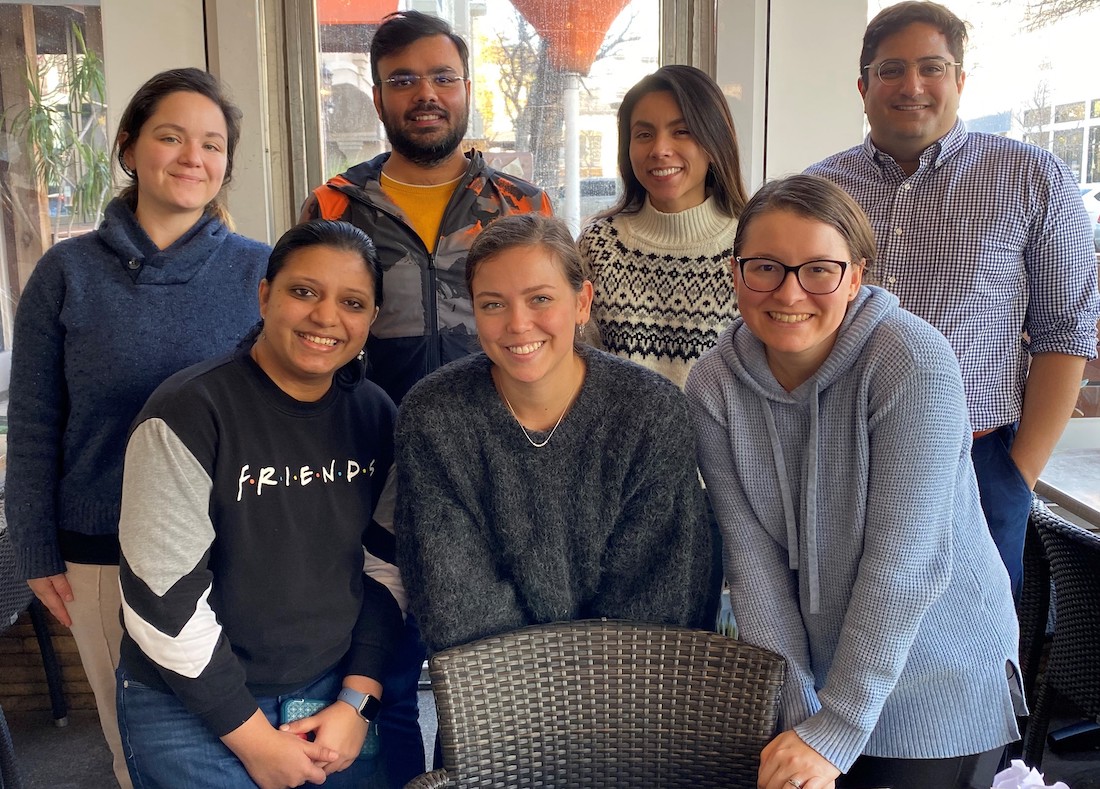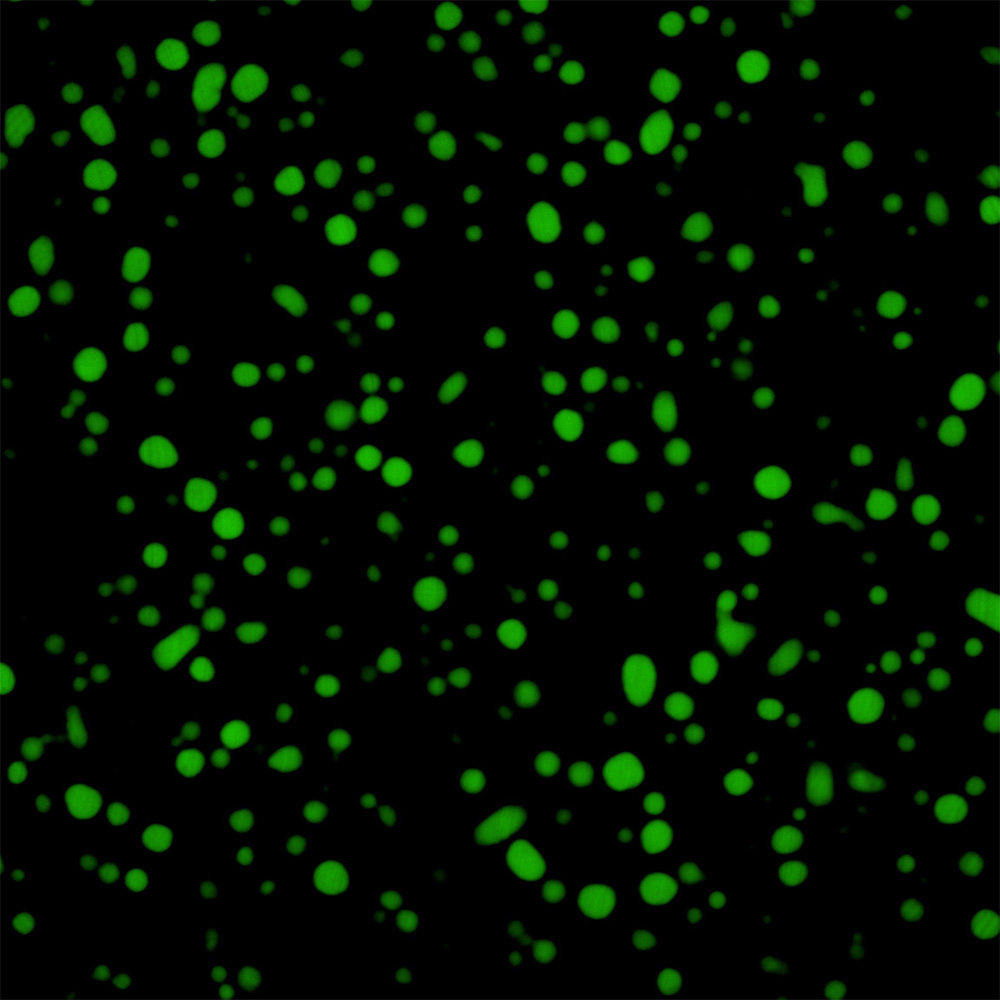UT Southwestern researchers discover gene regulation mechanism
Findings could lead to new ways to treat a variety of diseases

DALLAS – Feb. 03, 2023 – UT Southwestern Medical Center researchers have discovered a method cells use to turn genes on and off that involves portions of proteins whose function has long been a mystery. The findings, reported in Cell, could lead to new ways of controlling gene regulation and may one day lead to new treatments for a broad array of diseases.
“We think this is likely just the tip of the iceberg. Interactions among these disordered regions of proteins have largely been ignored because it was unclear how they worked. Now, they’re opening a new world of regulatory interactions that we previously didn’t know existed,” said Benjamin Sabari, Ph.D., Assistant Professor in the Cecil H. and Ida Green Center for Reproductive Biology Sciences and in the Departments of Molecular Biology and Obstetrics and Gynecology at UT Southwestern. Dr. Sabari is also a member of the Harold C. Simmons Comprehensive Cancer Center.
Dr. Sabari co-led the study with graduate student Heankel Lyons and postdoctoral fellows Reshma T. Veettil, Ph.D., and Prashant Pradhan, Ph.D., all members of the Sabari lab. This study is the lab’s first independent published research.
Groundbreaking work by others at UTSW and elsewhere over the past decade has shown that specific proteins are compartmentalized together inside cells in entities known as biomolecular condensates, Dr. Sabari explained. Intrinsically disordered regions (IDRs) of these proteins – parts without a defined 3D structure – were shown to be involved in forming these condensates. However, how interactions mediated by these IDRs compartmentalized specific sets of proteins and whether this organization was functional were unknown.

To answer these questions, Dr. Sabari and his colleagues focused on MED1, a protein that forms part of a complex involved in transcription, a critical step in the process through which genes produce proteins. MED1, which has a large IDR, is known to compose part of some biomolecular condensates. It has also been linked to estrogen receptor-positive breast cancer.
To determine which other proteins join MED1 in condensates and which are excluded, the researchers opened human cells to expose their contents and reconstituted condensates in the presence of this extracted material by spiking in the IDR of MED1. They then isolated the MED1 condensates and used analytical techniques to determine the proteins present within the condensate and those left behind.

Their results showed that the proteins in these MED1 condensates were enriched for positive regulators of transcription, while negative regulators were left out.
Further investigation showed that proteins present in the MED1 condensates contained IDRs with shared sequence features of having alternating blocks of positive and negative charge. When the researchers removed IDRs from some included proteins, they could no longer join the condensates. Conversely, when the researchers added IDRs to the excluded proteins, they became part of the condensates.
Which proteins were included in the condensates had functional consequences, Dr. Sabari said. When negative regulators joined the MED1 condensates or when positive regulators lost their access, the cells could no longer perform transcription necessary for specific cellular tasks.
Understanding how interactions among different IDRs within condensates are dysregulated in these diseases and finding ways to alter their interactions could one day lead to a new class of treatments for these conditions.
“At UTSW, there are facilities and expert colleagues with whom to start screening for small molecules or peptides that can disrupt these IDR-mediated interactions occurring within condensates, which we plan to take advantage of,” Dr. Sabari said.
Other UTSW researchers who contributed to this study are Christy Fornero, Nancy De La Cruz, and Mikayla Eppert.
This work was supported by grants from the Cancer Prevention and Research Institute of Texas (RR190090), the National Institutes of Health (GM147583, DK071900, and CA234575), the National Cancer Institute (CA009673), and a Japan Society for the Promotion of Science postdoctoral fellowship.
About UT Southwestern Medical Center
UT Southwestern, one of the nation’s premier academic medical centers, integrates pioneering biomedical research with exceptional clinical care and education. The institution’s faculty has received six Nobel Prizes, and includes 24 members of the National Academy of Sciences, 18 members of the National Academy of Medicine, and 14 Howard Hughes Medical Institute Investigators. The full-time faculty of more than 2,900 is responsible for groundbreaking medical advances and is committed to translating science-driven research quickly to new clinical treatments. UT Southwestern physicians provide care in more than 80 specialties to more than 100,000 hospitalized patients, more than 360,000 emergency room cases, and oversee nearly 4 million outpatient visits a year.
